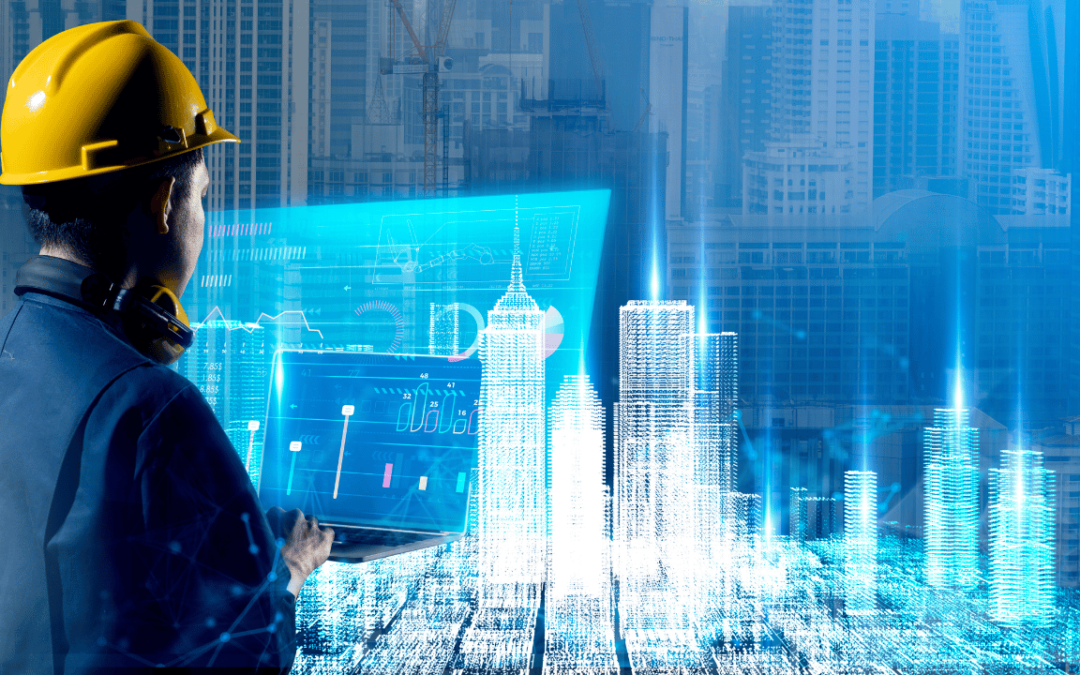In a world where innovation knows no bounds, architecture stands as a testament to human creativity. Futuristic building designs are pushing the boundaries of what we once thought possible, blending form, function, and sustainability in awe-inspiring ways. In this article, we’ll embark on a journey through the marvels of tomorrow’s architecture, exploring cutting-edge designs that redefine the skyline.
Premier Architecture Design Services Provider in Pakistan
Table of Contents
The Sky City: Vertical Urbanism
Imagine a city that soars towards the heavens, a vertical metropolis where people live, work, and play, all within the same structure. Vertical urbanism is redefining city skylines, with buildings that seem to touch the clouds. These towering structures not only save space but also integrate green spaces and communal areas, creating a harmonious blend of urban living and natural elements.
Key Points:
- Vertical cities maximize land use, creating more living space in densely populated areas.
- Green spaces within skyscrapers contribute to a healthier, more sustainable urban environment.
Organic Architecture: Buildings that Breathe ( Futuristic Building Designs )
Nature has always been a source of inspiration for architects, but now it’s becoming an integral part of the design process. Organic architecture mimics the forms, patterns, and systems found in nature, creating buildings that seem to breathe and evolve. These designs incorporate natural elements, from biomimicry to sustainable materials, to seamlessly blend with their surroundings.
Key Points:
- Biomimicry in architecture draws inspiration from nature’s efficiency and sustainability.
- Sustainable materials and construction techniques reduce the environmental impact of buildings.
Smart Buildings: Intelligence in Every Facet ( Futuristic Building Designs )
In the era of smart technology, buildings are getting smarter too. From integrated IoT systems to AI-powered energy management, these structures adapt to occupants’ needs in real time. Smart buildings enhance comfort, efficiency, and security, revolutionizing the way we interact with our living and working spaces. ( Futuristic Building Designs )
Key Points:
- IoT integration allows for seamless control of lighting, climate, and security systems.
- AI-driven energy management systems optimize resource usage, leading to substantial cost savings.
Green Roofs and Living Facades ( Futuristic Building Designs )
As concrete jungles expand, the importance of green spaces cannot be overstated. Green roofs and living facades bring nature back into urban environments. These designs incorporate vegetation into building structures, providing natural insulation, improving air quality, and creating havens for biodiversity. ( Futuristic Building Designs )
Key Points:
- Green roofs reduce urban heat island effects, keeping cities cooler and more livable.
- Living facades improve building energy efficiency and contribute to a healthier urban ecosystem.
The Fusion of Nature and Technology
In the quest for sustainable living, architects are harnessing the power of both nature and technology. From solar-panel-clad skyscrapers to buildings that harness wind energy, the fusion of these elements is shaping a new era of environmentally conscious design.
Key Points:
- Solar panels and wind turbines integrated into buildings contribute to renewable energy production.
- Passive design techniques maximize natural lighting and ventilation, reducing energy consumption.
Interactive and Adaptive Structures
Imagine a building that responds to your presence, adapting its layout and environment to suit your needs. Interactive and adaptive structures use advanced sensors and technology to create spaces that anticipate and meet the preferences of their occupants. This revolutionary approach to architecture blurs the line between the built environment and the individual.
Key Points:
- Sensors and AI technology allow buildings to adjust lighting, temperature, and layout based on user preferences.
- Adaptive structures enhance accessibility and inclusivity, catering to a diverse range of needs.
The Transparent Revolution
Transparency in architecture is not just about glass walls. It’s about openness, both in design and intent. Transparent buildings invite the outside in, connecting occupants with their surroundings. They symbolize a new era of openness, collaboration, and accessibility in architectural design.
Key Points:
- Glass structures promote natural light, reducing the need for artificial lighting and improving well-being.
- Open design concepts foster a sense of community and collaboration among occupants.
Modular Marvels: Reimagining Space
Modular architecture is revolutionizing the way we think about space. These designs use prefabricated components that can be assembled like building blocks, allowing for rapid construction and customization. Modular buildings are flexible, cost-effective, and open up a world of possibilities for unique and adaptable spaces.
Key Points:
- Prefabrication reduces construction time and waste, making modular buildings a sustainable choice.
- Modular designs can be easily adapted for various purposes, from residential to commercial spaces.
Self-Sustaining Skyscrapers
The future of architecture is green and self-sustaining. Skyscrapers are being designed to generate their own energy, recycle water, and even produce food. These self-sustaining marvels are not only environmentally friendly but also serve as beacons of innovation and sustainability.
Key Points:
- Renewable energy sources such as solar and wind power make skyscrapers energy-independent.
- Water recycling systems and vertical farming contribute to self-sufficiency and reduce environmental impact.
Beyond Glass: Alternative Building Materials
While glass has long been a symbol of modernity, architects are now exploring alternative materials that are both sustainable and visually striking. From bamboo to recycled steel, these innovative choices are not only eco-friendly but also lend a unique aesthetic to futuristic designs.
Key Points:
- Alternative materials reduce the carbon footprint of construction and promote sustainable sourcing.
- Diverse materials offer a wide range of textures, colors, and visual effects, adding depth to architectural aesthetics.
Underwater Wonders: Cities of the Abyss
As urban spaces become more crowded, architects are turning their attention to the depths of the ocean. Underwater cities, once confined to science fiction, are now a tantalizing possibility. These subaquatic habitats could potentially solve the challenges of overcrowding while unlocking a new frontier for human habitation.
Key Points:
- Underwater cities utilize natural resources for energy and provide a unique opportunity for marine conservation.
- Advanced engineering techniques ensure the safety and sustainability of underwater habitats.
Transportation Integration
The future of building design isn’t just about the structures themselves, but how they integrate with transportation systems. From vertical transportation hubs to buildings with integrated parking and electric vehicle charging, seamless connectivity is the name of the game.
Key Points:
- Vertical transportation hubs streamline urban mobility, reducing congestion and emissions.
- Integrated transportation facilities enhance accessibility and convenience for occupants.
Accessibility for All
Inclusive design is at the forefront of futuristic building concepts. Spaces are being created with the needs of all individuals in mind, regardless of age or ability. From wheelchair-friendly layouts to sensory-friendly environments, these designs prioritize accessibility and inclusivity.
Key Points:
- Universal design principles ensure that spaces are usable and enjoyable for everyone.
- Inclusive environments foster a sense of belonging and well-being among all occupants.
Cultural Icons in the Sky
Futuristic buildings aren’t just functional; they’re also statements of culture and identity. Architects are drawing on local traditions, history, and symbolism to create buildings that resonate with the communities they serve. These cultural icons in the sky are a testament to the rich tapestry of human heritage.
Key Points:
- Culturally inspired designs foster a sense of pride and connection within communities.
- Architectural storytelling through design elements creates a deeper appreciation for local history and heritage.
Sky Gardens: A Sanctuary in the Clouds
Green spaces are no longer confined to ground level. Sky gardens, perched high above the urban sprawl, offer a sanctuary in the midst of the concrete jungle. These elevated oases provide a retreat for relaxation, recreation, and connection with nature, all while enjoying breathtaking views.
Key Points:
- Sky gardens enhance urban well-being by providing spaces for relaxation and recreation.
- Biodiverse plantings in sky gardens contribute to urban ecology and promote biodiversity.
Conclusion: Embracing the Future
Futuristic building designs are not just a glimpse into tomorrow; they’re a testament to human ingenuity and our capacity to shape a sustainable, harmonious future. As these architectural marvels continue to evolve, they invite us to reimagine our relationship with the spaces we inhabit. From vertical cities to underwater habitats, the future of architecture promises to be as diverse and awe-inspiring as the world itself.
Frequently Asked Questions
1. What makes futuristic building designs sustainable?
Futuristic building designs incorporate sustainable materials, energy-efficient systems, and innovative construction techniques. They often integrate renewable energy sources, green spaces, and technologies that reduce environmental impact.
2. How do interactive and adaptive structures work?
Interactive and adaptive structures use advanced sensors and AI technology to respond to occupants’ needs. They can adjust lighting, temperature, layout, and other elements to create a personalized and comfortable environment.
3. Are underwater cities a realistic possibility?
Advancements in engineering and technology have made underwater cities a tantalizing possibility. These subaquatic habitats could potentially address challenges of overcrowding in coastal areas, while also offering unique opportunities for marine conservation.
4. How do cultural icons in the sky contribute to community identity?
Cultural icons in the sky draw on local traditions, history, and symbolism to create buildings that resonate with the communities they serve. They foster a sense of pride, connection, and cultural identity among residents.
5. What is the significance of sky gardens in urban environments?
Sky gardens provide a sanctuary in the midst of urban sprawl, offering spaces for relaxation, recreation, and connection with nature. They contribute to urban well-being, promote biodiversity, and enhance the overall quality of urban life.



Recent Comments